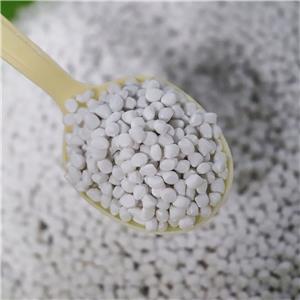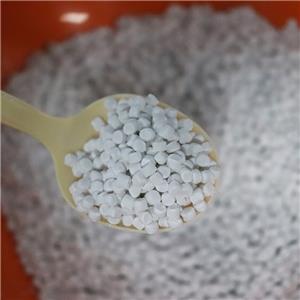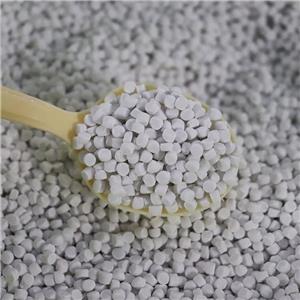What are the effects of ultrafine talc on modified plastics
Talc not only plays a role in reducing costs in plastic modification, but also has an obvious enhancement effect, but not all talc will have an enhancement effect. With the difference of product grade, the difference is very obvious. And the types of plastics are different, the performance is not the same, the processing equipment is different, it is difficult to give a unified specific standard for the talc used in the plastic industry. The overall principle of selecting talc powder in the plastics industry is: try to use talc powder products with matching particle size, talc raw materials and particle size distribution must be stable, and the distribution range should be narrow to ensure the stability of the quality of plastic products.

Due to the diversity of talc ore, it is recommended that modified plastic manufacturers communicate with talc manufacturers in the process of selecting talc powder, and choose their own models to obtain the best results. When selecting a specific product, at least four indicators of talc powder should be considered: talc content, dry whiteness, sheet structure, and fineness.
Talc powder has the characteristics of sheet structure, and fine talc powder is often used as a reinforcing filler for polypropylene. The addition of ultrafine talc powder can not only significantly improve the rigidity, surface hardness, heat resistance creep, electrical insulation, dimensional stability of the product, but also improve its impact strength.
Adding a small amount of talc powder to polypropylene can also play a role as a nucleating agent to improve the crystallinity of the product, so that the mechanical properties of the product are improved, and because of the improvement of crystallinity, fine grains, it can also improve transparency. Polypropylene composites filled with 20% and 40% ultrafine talc, both at room temperature and high temperature, can significantly improve product rigidity and creep resistance at high temperatures.
First, content and dry whiteness
The chemical composition of the talc is magnesium silicate hydrate [Mg₃ ₄O₁₀(OH)₂]. In nature and industrial production, talc has impurities, and 100% pure talc products in industry do not exist.
There is no doubt that the higher the purity of talc powder, the better its enhancement effect. Some impurities in talc powder have a significant impact on the performance of plastic products, such as: carbonates in talc powder affect the thermal stability of plastics, metal iron and heavy metals affect the anti-aging property of plastics.
There are two kinds of dry whiteness of talc powder, narrow and broad. Narrow whiteness refers to the dry whiteness of talc powder, which can be expressed by blue whiteness R457, Y, L*, Gantz whiteness, and Hunter whiteness.
Generalized whiteness usually includes dry whiteness, wet whiteness and hue. Wet whiteness is the white brightness L value measured after talc powder is added with an appropriate amount of DOP (dioctyl phthalate), the disadvantage of talc powder is that the color of the plastic is more or less darkened after mixing, which is an important factor limiting the wide use of talc powder in plastics.
Compared with dry whiteness, wet whiteness can more intuitively reflect the degree to which talc can change the color of plastic matrix. The lower the b*(b) value of the wet whiteness, the smaller the color change of the plastic matrix.
Most talc in the world is not white. White talc is mainly from China, Afghanistan, India, very limited. With the growth of demand for white talc in the plastics industry, the price has continued to rise in the past 20 years. White talc supply shortage is a major trend in the future. But in fact, in many applications, it is not necessary to white talc. Such as the enhancement modification of dark plastic, the enhancement effect of white talc and dark talc is the same.
The test results show that for every 1% increase in the wet whiteness of talc, the whiteness of the finished product is only 0.2% ~ 0.3%. There is no point in blindly pursuing the whiteness of talc. Before, because the price of white talc was too low, many customers did not consider the cost of using white talc too much. With the decrease of supply and the increase of prices, it is necessary to change the use of habits and improve the comprehensive utilization of resources.
The talc powder used to enhance the modification also needs to control the number of black spots in it, especially for light-colored products with high requirements for appearance. This kind of black spot is natural iron sulfide, graphite and other dark minerals or mining foreign dark impurities produced after grinding. A small number of black spots have almost no effect on the whiteness, but on the surface of light-colored plastic products will form visible black spots and defects, affecting the appearance. A lot of dark spots will have an adverse effect on whiteness. Impurities will also be further broken as the fineness of the powder increases, resulting in a reduction in the whiteness of the powder.
Second, sheet structure and degree of fineness
The remarkable enhancement effect of talc on polymer compound products mainly comes from its special lamellar structure. The more complete the flake structure of talc powder, the more obvious the enhancement effect. The two main factors that affect the flake of the product are: the purity of talc powder and the processing of the powder.
Talc impurities do not have a flake structure, that is, the purer talc, the less impurities, the better the flake structure. In addition, in the fine processing process, the selection of different processing methods, the product sheet structure is also different, incorrect processing technology will destroy the sheet structure of talc powder.
Micronization is the development trend of talc products, and the finer the product, the better the enhancement effect. When reviewing a product, its average particle size should not only meet the requirements, but more importantly, the particle size distribution should be as narrow as possible, the large particles should be as small as possible, and the product should try to achieve the same particle size distribution in each batch, which is very difficult in the production process. In the high-end products of talc powder, controlling the particle size distribution and the number of coarse particles is a very important technology.




